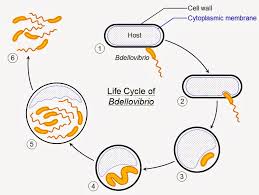"EFECTO DE LA BACTERIA DEPREDADORA BDELLOVIBRIO SOBRE LAS INFECCIONES GASTROINTESTINALES PRODUCIDAS POR E. COLI."
Utilizaremos a la bacteria bdellovibrio como un antibiótico vivo para reducir de esta manera las enfermedades producidas por la bacteria E.coli en el tracto gastrointestinal.
Pero ¿porque escoger la bacteria bdellovibrio como un antibiótico vivo?
La Bdellovibrio es una bacteria depredadora muy interesante porque su táctica consiste en unirse a ciertas bacterias para invadirlas. Una vez dentro de su presa consume la célula del anfitrión desde su interior. Si la presa es adecuada, la Bdellovibrio usará un cóctel químico capaz de degradar lípidos, proteínas y moléculas de carbohidratos para abrir un agujero en la pared celular de su víctima. Así, el predador se introduce entre la membrana externa y la interna de la célula de la presa.
Se utilizara este mecanismo de la bdellovibrio par contrarrestar la cantidad de e coli presentes en el tracto gastrointestinal y de esta manera reducir las enfermedades gastrointestinales producidas por la escherichia coli.




















